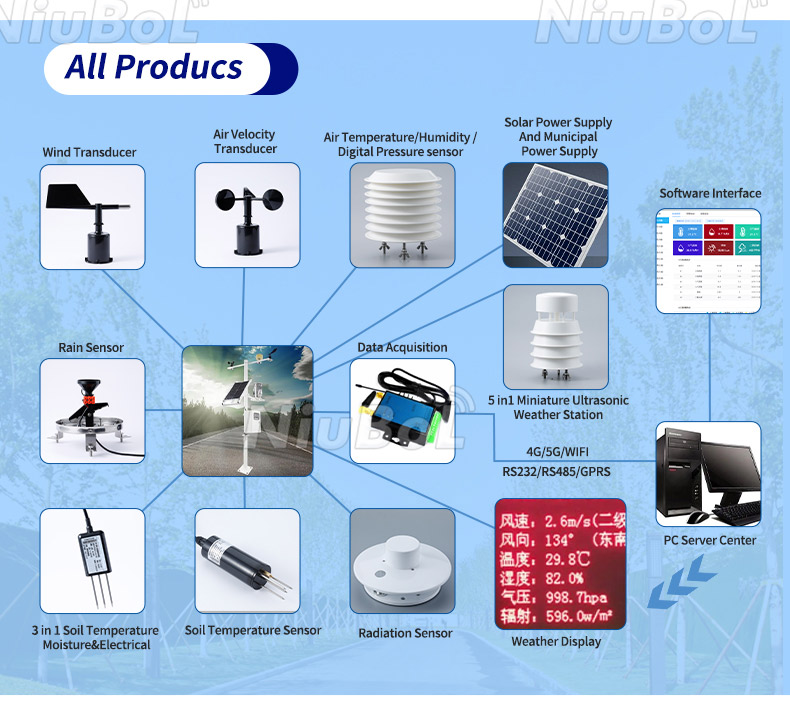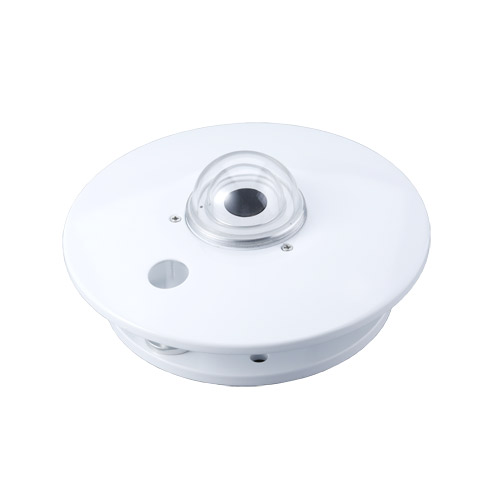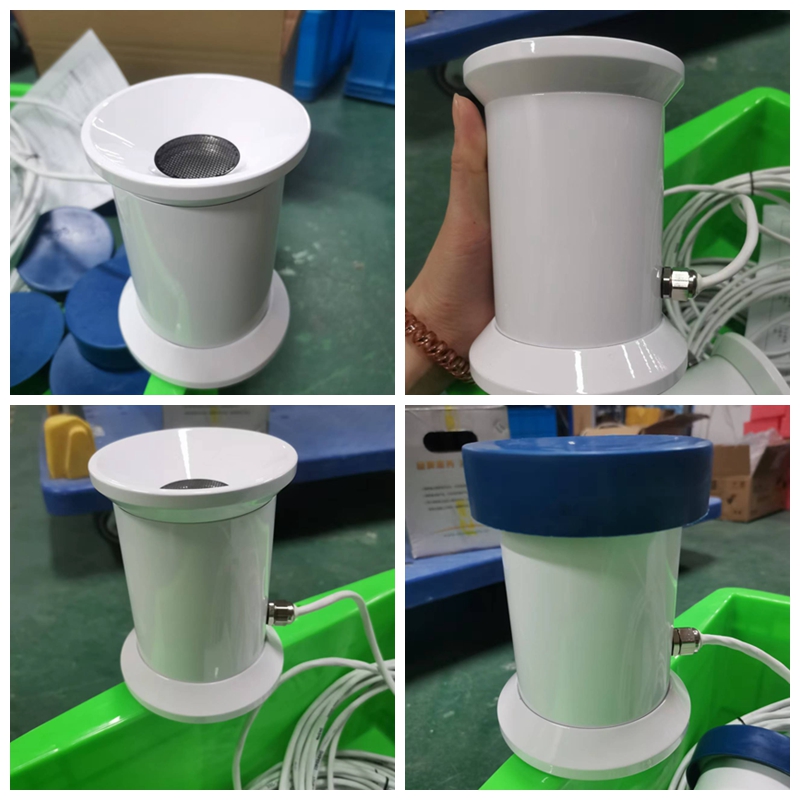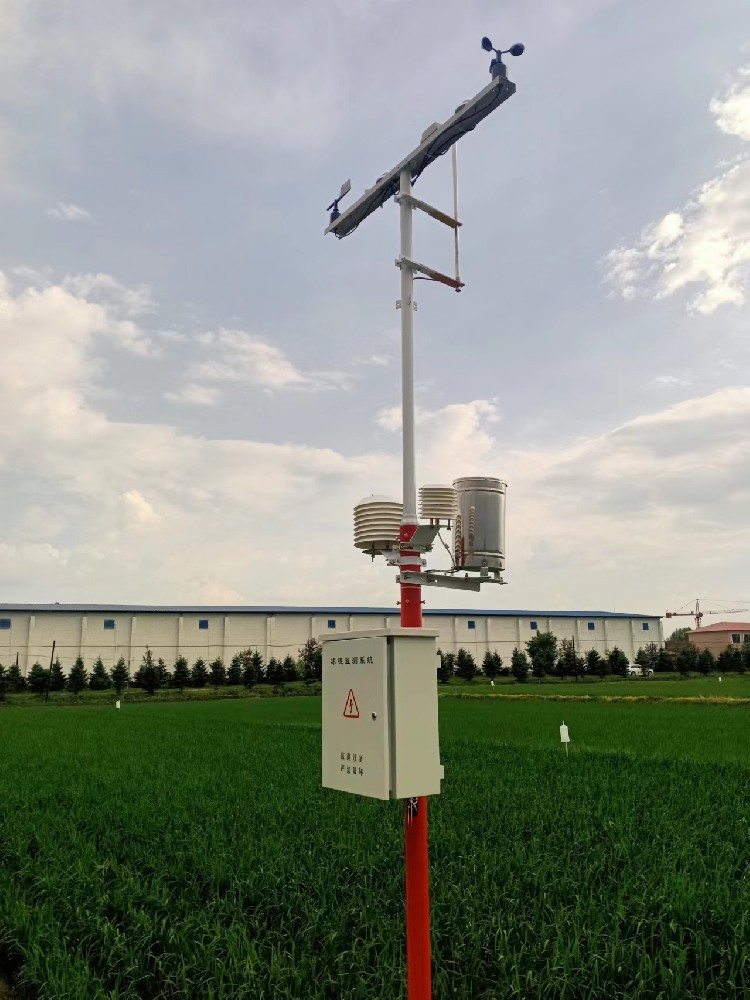

— Blogs —
—Products—
 Consumer hotline +8618073152920
Consumer hotline +8618073152920 WhatsApp:+8615367865107
Address:Room 102, District D, Houhu Industrial Park, Yuelu District, Changsha City, Hunan Province, China
Product knowledge
Time:2024-11-27 20:20:30 Popularity:2760
Intelligent weather monitoring instrument is a precision instrument integrating modern sensing technology, microelectronics technology and network communication technology, which is used for real-time monitoring and recording of meteorological data such as temperature, humidity, barometric pressure, wind speed, wind direction, precipitation and ultraviolet rays, etc. The instrument is widely used in the fields of meteorology, agriculture, environmental protection, scientific research and education, providing users with accurate and timely meteorological information.
The instrument is widely used in meteorology, agriculture, environmental protection, scientific research, education and other fields to provide users with accurate and timely weather information. Modern meteorological monitoring systems are highly integrated and utilize Internet of Things (IoT) technology, where data is sent in real time via wireless transmission to a data center for analysis and distribution. These systems are often equipped with advanced software that automatically analyzes the data and generates weather forecasts to support scientific research and public safety decisions. The following is a detailed introduction to weather monitoring instruments:
Weather monitoring instruments are mainly composed of the following parts:
1. collection sensor: used to monitor and collect data of various weather elements, such as temperature, humidity, air pressure, wind direction, wind speed, precipitation, etc..
2. meteorological monitoring host: processing, storing and transmitting the collected data, and at the same time supporting external devices to ask for data through specific protocols.
3. power supply system: provides power support for the whole monitoring instrument, usually adopts utility power or solar panel dual power supply mode, to ensure that the equipment can work normally even in the case of power failure.
4. Communication module: responsible for real-time transmission of monitoring data to the central data processing station for further analysis and early warning.

The following are some common weather monitoring instruments and their brief introduction:
- Function: Measurement of air temperature.
- Type: Traditional mercury column type, electronic thermometer.
- Application: To understand temperature-related phenomena such as heat waves and frost, and to predict extreme weather events.
- Function: Measure the water vapor content of the air.
- Types: wet and dry bulb thermometers, electronic sensors.
- Applications: Predict dew point, fog formation and human comfort.
- Function: Measurement of atmospheric pressure.
- Types: mercury barometers, electronic barometers.
- Applications: Predicting changes in weather patterns. Decreasing barometric pressure predicts storms, increasing barometric pressure predicts sunny days.
- Function: Measure wind speed.
- Types: rotating cup type, ultrasonic type, thermal type.
- Applications: weather forecasting, wind energy assessment, aviation safety, sports activities.
- Function: Measure wind direction.
- Types: mechanical, electronic.
- Applications: navigation, safety monitoring.
- Function: Measurement of precipitation.
- Type: tipping bucket type, ultrasonic type.
- Applications: flood warning, water resources management, agricultural irrigation planning.

- Function: Measure solar radiation intensity.
- Types: photoresistor, photodiode.
- Applications: solar power generation, climate research, crop growth modeling.
- Function: Measurement of cloud height and visibility.
- Types: laser cloud altimeter, forward scattering visibility meter.
- Applications: aviation safety, traffic management.
- Function: Measurement of total solar radiation on a horizontal plane.
- Types: thermocouple, thermistor.
- Applications: solar energy utilization, climate change research.

- Function: Measurement of snow thickness.
- Type: ultrasonic, optical.
- Applications: water resource management, ski resort operation, winter transportation safety.

Weather monitoring instruments play an important role in weather forecasting, disaster warning, agricultural production, transportation, urban planning and environmental protection and other fields, with the following values:
1. improve the accuracy of weather forecasting: through real-time monitoring and analysis of changes in meteorological elements, it provides a scientific basis for weather forecasting and improves the accuracy of forecasting.
2. timely warning of disaster weather: before the arrival of disaster weather, the data obtained from the monitoring instruments will be used for early warning, providing strong support for disaster prevention and mitigation.
3. Guiding agricultural production: Based on the monitored meteorological data, it provides farmers with precise planting and irrigation suggestions to improve the efficiency of agricultural production.
4. Guaranteeing traffic and travel safety: monitoring light intensity, wind speed and other meteorological elements to provide important references for traffic scheduling and travel safety.
5. Optimize urban layout: provide scientific basis for urban planning, help government departments optimize urban layout and improve urban climate environment.
Weather monitoring instruments have a wide range of application scenarios, including but not limited to the following aspects:
1. meteorological observation station: used for real-time monitoring and recording data of various meteorological elements, providing scientific basis for weather forecasting and disaster warning.
2. Agricultural meteorological observation system: real-time observation of crops and the external environment (farmland, soil) on which they depend for survival, providing farmers with precise planting, irrigation and other recommendations.
3. Traffic meteorological observation station: it can accurately and timely monitor the environmental conditions of roads, and combine with other monitoring sub-systems of the traffic management department to realize an intelligent traffic security network system.
4. environmental protection monitoring: monitoring the concentration of pollutants in the atmosphere, visibility and other parameters, to provide data support for environmental protection.
5. aerospace: in the field of aerospace, weather monitoring instruments can be used to monitor the meteorological conditions during flight to ensure flight safety.
6. scientific research and education: to provide meteorological experiments and data support for scientific research institutions and schools.
7. outdoor activities: to provide weather information for outdoor activities such as mountaineering, hiking and sailing.

Choose intelligent weather monitoring instruments to master the weather changes and provide strong protection for your production and life. If you have any questions or needs, please feel free to contact us, our professional team will be happy to serve you.
Related recommendations
Sensors & Weather Stations Catalog
Agriculture Sensors and Weather Stations Catalog-NiuBoL.pdf
Weather Stations Catalog-NiuBoL.pdf
Related products
 Combined air temperature and relative humidity sensor
Combined air temperature and relative humidity sensor Soil Moisture Temperature sensor for irrigation
Soil Moisture Temperature sensor for irrigation Soil pH sensor RS485 soil Testing instrument soil ph meter for agriculture
Soil pH sensor RS485 soil Testing instrument soil ph meter for agriculture Wind Speed sensor Output Modbus/RS485/Analog/0-5V/4-20mA
Wind Speed sensor Output Modbus/RS485/Analog/0-5V/4-20mA Tipping bucket rain gauge for weather monitoring auto rainfall sensor RS485/Outdoor/stainless steel
Tipping bucket rain gauge for weather monitoring auto rainfall sensor RS485/Outdoor/stainless steel Pyranometer Solar Radiation Sensor 4-20mA/RS485
Pyranometer Solar Radiation Sensor 4-20mA/RS485
Screenshot, WhatsApp to identify the QR code
WhatsApp number:+8615367865107
(Click on WhatsApp to copy and add friends)
